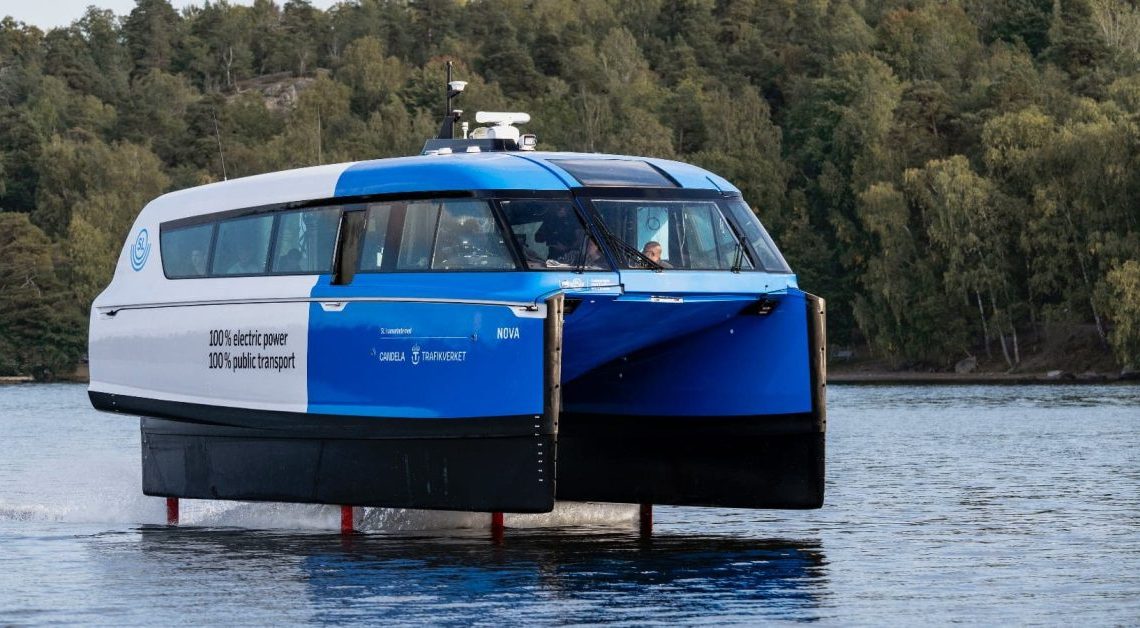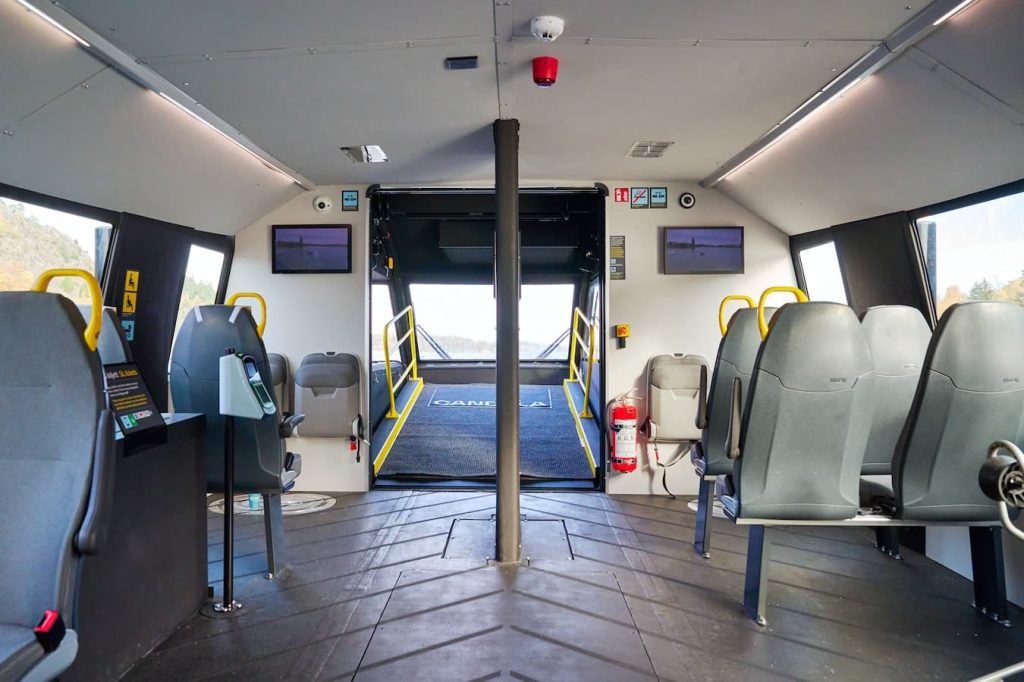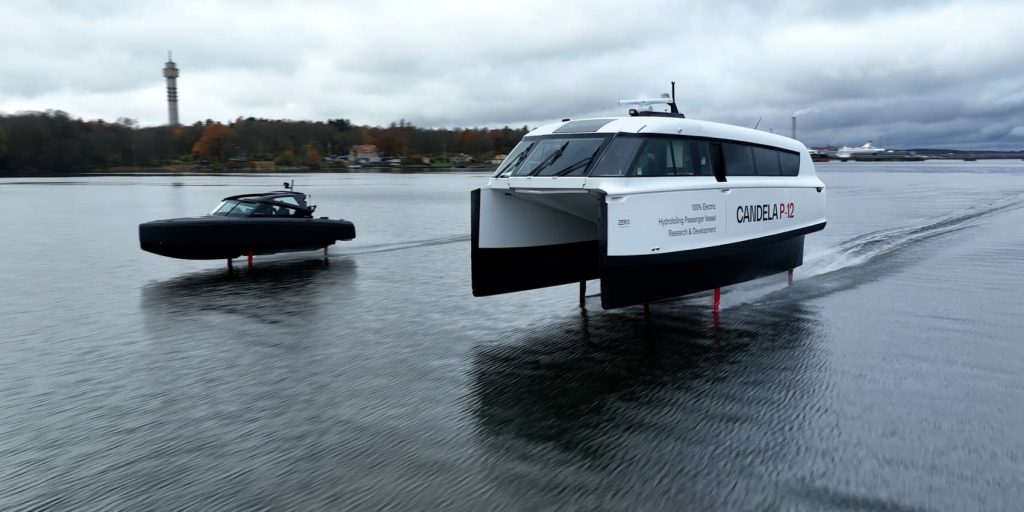
It flies, it floats, it’s electric — and now it’s officially a hit. The world’s first electric hydrofoil ferry, a Candela P-12 vessel named Nova, has wrapped up its first season of public service in Stockholm, and new data confirms what many suspected: this sleek, silent, water-skimming machine isn’t just a cool piece of tech — it’s also wildly successful.
The Nova, which first entered Stockholm’s public transport system last fall, uses a combination of electric propulsion and hydrofoil technology to quite literally lift above the water. This reduces drag, increases efficiency, and makes it the fastest electric passenger vessel in the world, cruising comfortably at 25 knots (around 29 mph or 46 km/h).
As it prepares to return to the water on April 15 after a winter pause, Stockholm’s public transport authority has released performance data from Nova’s autumn run. The numbers reveal that the boat isn’t just fast — it’s popular, green, and pulling people out of their cars.

Compared to the diesel ferries it operates alongside, Nova emits 95% less CO₂ and uses 84% less energy per passenger-kilometer. That translates to just 23 grams of CO₂ per passenger-kilometer, compared to 439 grams for the older diesel vessels. In other words, it’s a drop in a bucket compared to the old standard.
It’s not just an environmental win — it’s a rider favorite too. With 80% average occupancy (and many trips fully booked), Nova has become quite literally one of the hottest tickets on Stockholm’s Route 89. Some of that success may come from its 30-minute travel time between Tappström and Stockholm City Hall — roughly half the time it takes to get there by car or bus.
The numbers are clear with the data revealing that Nova attracts more people to travel on water, with a 30% increase in ridership on route 89. According to Candela CEO Gustav Hasselskog, this shows that high-speed, comfortable waterborne transit can actually convert car commuters into ferry riders — a holy grail for sustainable city planning.


In response to the strong demand, Region Stockholm will expand Nova’s service from five to six days a week this spring, and to daily operations by May. In August, the pilot program will be evaluated — and Candela is already eyeing more routes across Stockholm’s vast archipelago.
The P-12’s combination of speed, silence, and ultra-low operating costs makes it ideal for routes with moderate passenger volume — a gap that many traditional ferries struggle to serve efficiently.
Candela isn’t stopping in Sweden, either. The company already has customers lined up in Saudi Arabia, New Zealand, and the U.S., suggesting that this may be just the beginning of the era of flying electric ferries.
“We are incredibly happy that Region Stockholm has enabled us to demonstrate the hydrofoil technology in the city’s public transport. We see that waterways in most cities have enormous potential for fast, low-cost, and emission-free transport that can relieve road networks and increase accessibility,” said Hasselskog. “This is just the beginning.”

Electrek’s Take
I’ve followed Candela with such interest over the years not just because of their fun electric speedboats (though I love those too, as you can tell from my first ride video below), but also because of the company’s ability to help take more cars off the road and switch commuters to ferry riders.
As someone who lives a largely car-free lifestyle, that’s huge for me. When we talk about reforming urban transportation, such lofty goals require a holistic approach and we should include a diverse field of options that can work together to achieve those intentions. Flying electric boats might not be most people’s first thought, but they achieve the same goal as many other alternatives, shifting commuters to more sustainable alternatives to cars.
We’ve already seen how capable electric hydrofoil ferries like these are, even watching the Candela P-12 tackle large swells in open seas. So short commutes like these that allow rapid recharging via DC Fast Charging at each stop make so much sense for such a capable machine.
Even when compared to traditional electric ferries, which are already an improvement by reducing emissions, electric hydrofoil ferries like these go so much further. They not only use even less energy than a traditional electric ferry, but they offer a faster trip and a smoother ride, making the idea of ferry travel that much more enticing. In this case seen in Stockholm, commuters get to arrive faster, more comfortably, and in a pretty cool way. That’s a win-win-win if you ask me!
Author: Micah Toll
Source: Electrek



